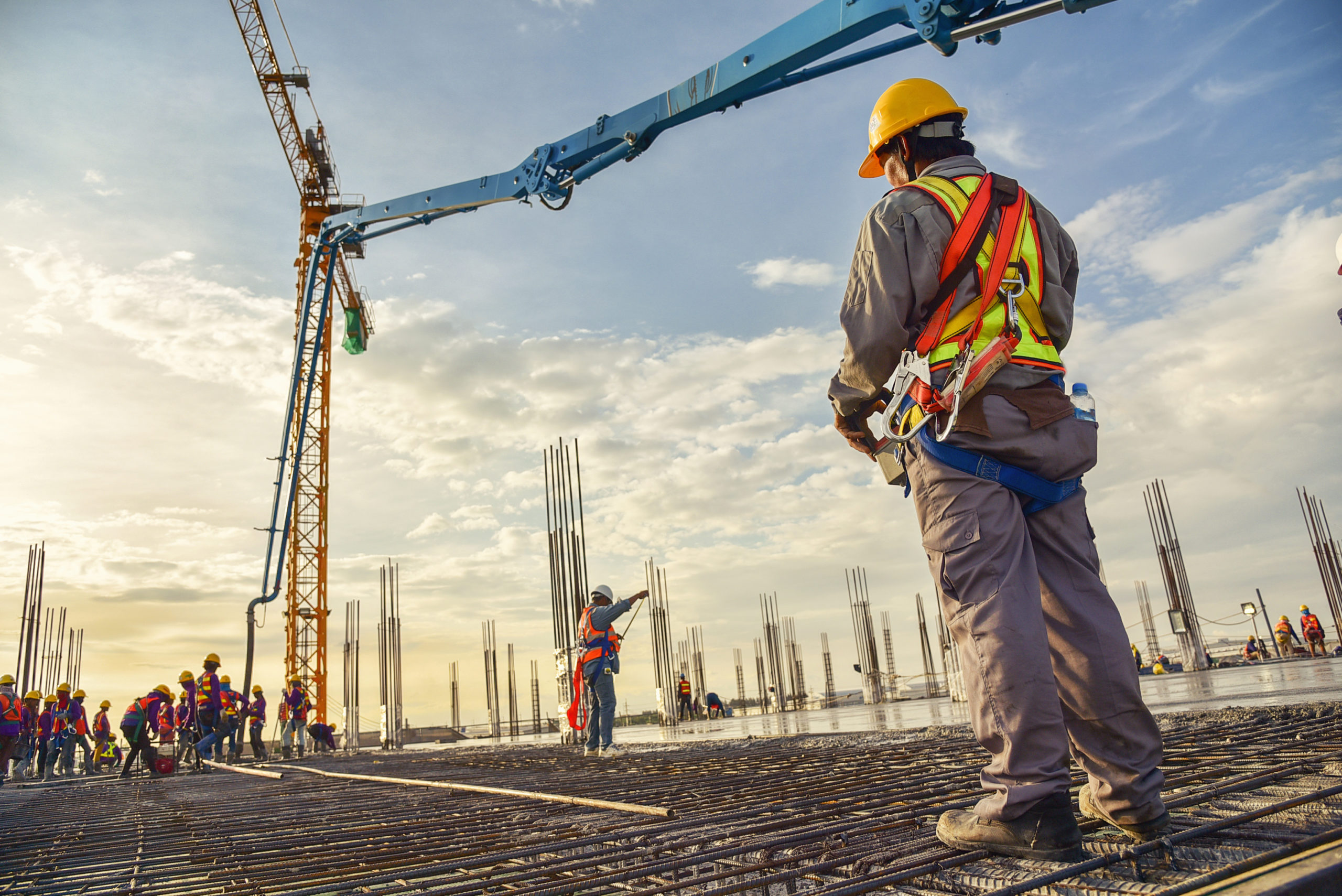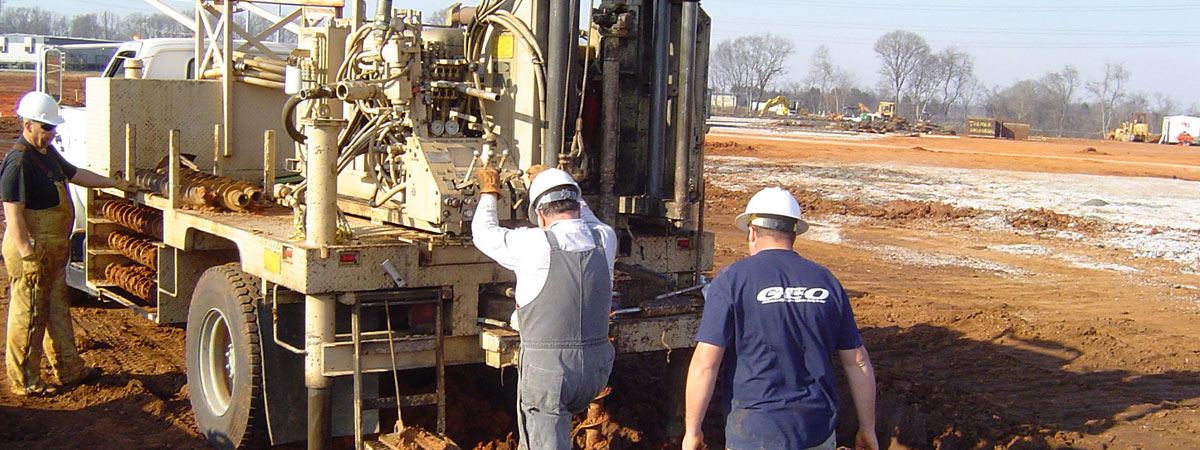The Interdisciplinary Approaches in the Geotechnical Market: Bridging the Space In Between Design, Geology, and Environmental Scientific Research for Optimal Job Outcomes
The integration of engineering, geology, and environmental science within the geotechnical industry is not merely beneficial; it is necessary for accomplishing optimum project outcomes. This interdisciplinary collaboration promotes a comprehensive understanding of complex site conditions, permitting cutting-edge services to arise. By analyzing essential roles and effective situation researches, we can discover the dynamic interaction that drives project success. Nonetheless, difficulties stay in efficiently taking care of these multidisciplinary initiatives, increasing concerns concerning potential improvements and future trends. What methods might emerge to promote this crucial collaboration and enhance the efficiency of geotechnical techniques?
Relevance of Interdisciplinary Collaboration
The significance of interdisciplinary cooperation in the geotechnical industry can not be overstated. Efficient geotechnical tasks require the combination of diverse experience from various fields, including engineering, geology, and environmental science. This cooperation guarantees that all elements of a task are thought about, bring about detailed solutions that attend to complicated challenges.
Interdisciplinary cooperation fosters development by enabling specialists to share insights and approaches that might not be noticeable when working in seclusion (tailings engineer). By leveraging the staminas of multiple techniques, teams can identify possible dangers, enhance style processes, and boost the sustainability of geotechnical projects. Such partnership advertises an all natural understanding of site-specific conditions, which is crucial for exact evaluation and decision-making.
The intricacy of geotechnical jobs demands a worked with approach to analytic. When designers, rock hounds, and environmental scientists interact, they can develop a natural technique that lines up technological demands with ecological factors to consider and governing compliance. This harmony not only boosts job end results but also contributes to the lasting durability of framework. Eventually, interdisciplinary cooperation is vital for progressing best methods and attaining quality in the geotechnical industry.
Trick Roles of Each Self-control
Cooperation among different self-controls is not just helpful; it is vital for the successful execution of geotechnical projects. Each discipline-- engineering, geology, and environmental science-- plays an unique yet interconnected duty that contributes to project effectiveness and sustainability.
Geotechnical designers are mainly responsible for creating foundations and making sure architectural honesty. They analyze dirt and rock homes to examine load-bearing capabilities, supplying essential information for safe building and construction techniques. Their competence enables the formula of cutting-edge remedies to intricate difficulties.

Ecological researchers evaluate the prospective effects of building and construction on ecological communities and water resources. They conduct ecological assessments and develop mitigation approaches to decrease negative impacts. By integrating ecological considerations, they ensure compliance with regulations and advertise sustainability throughout the task lifecycle.
Study of Successful Combination
Successful combination of geotechnical disciplines can be exemplified through different study that highlight the performance of team effort in dealing with complex engineering obstacles. One significant example is the construction of the Hong Kong-- Zhuhai-- Macau Bridge, where a collaborative approach involving geotechnical engineering, geology, and ecological science was crucial. Rock hounds and designers operated in unison to evaluate the seabed conditions and optimize the foundation design, making sure stability and minimizing environmental effect.
An additional impactful case is the enhancement of incline security in the San Francisco Bay Area, where an interdisciplinary team combined geotechnical evaluation with ecological analyses. By integrating geological surveys and hydrological studies, the group effectively identified prospective landslide risks and implemented effective mitigation actions, boosting safety and sustainability.
In addition, the redevelopment of Brownfield sites frequently calls visit for a multidisciplinary approach. In one instance in Chicago, partnership amongst geotechnical designers, environmental scientists, and urban coordinators led to the effective removal of infected dirt, enabling for the secure transformation of the website into a neighborhood park. These situation research studies show that interdisciplinary his response partnership not only addresses technical challenges but also fosters innovative services that benefit both projects and communities.
Difficulties in Multidisciplinary Projects

Furthermore, coordinating timetables and process among numerous groups can be troublesome, particularly when each technique has special job milestones and deliverables. This imbalance can lead to delays and raised prices. The obstacle of source allowance likewise impends huge; making certain that customized know-how is readily available at crucial junctures requires cautious planning and insight.
Lastly, regulative conformity postures another substantial challenge. Each discipline might deal with different regulative structures, and lining up these needs to satisfy task objectives can be intricate and time-consuming. Resolving these difficulties demands strong leadership and reliable communication techniques to foster partnership and guarantee that multidisciplinary groups work cohesively in the direction of shared objectives.
Future Trends in Geotechnical Practices
As the geotechnical industry evolves, arising trends are reshaping practices to resolve the challenges dealt with in multidisciplinary tasks - geotechnical engineers. One substantial trend is the boosted integration of sophisticated modern technologies, such as man-made intelligence and artificial intelligence, into geotechnical analysis and layout. These technologies enhance predictive modeling and danger analysis, enabling engineers to make even more educated decisions throughout the job lifecycle

Furthermore, the fostering of electronic doubles and real-time monitoring systems is ending up being extra common. These devices facilitate continuous assessment of dirt conditions and structural efficiency, allowing for prompt treatments when concerns arise.
Final Thought
Finally, the integration of engineering, geology, and environmental scientific research is crucial for achieving optimal results in the geotechnical industry. Interdisciplinary cooperation fosters advancement, enhances analytical capacities, and straightens technical requirements with ecological sustainability. Successful case researches highlight the benefits of this technique, while recognizing the difficulties dealt with in multidisciplinary jobs. Looking ahead, embracing these joint techniques will certainly be crucial for browsing future patterns and advancing the field of geotechnical engineering.
The assimilation of engineering, geology, and ecological science within the geotechnical market is not merely advantageous; it is vital for achieving optimum job outcomes. Reliable geotechnical projects call for the integration Visit Website of varied competence from various areas, including engineering, geology, and ecological scientific research.Browsing the complexities of multidisciplinary projects in the geotechnical sector presents several significant challenges.As the geotechnical market develops, emerging trends are improving methods to deal with the challenges dealt with in multidisciplinary jobs. Geotechnical designers are increasingly working together with ecological scientists to make certain that tasks straighten with sustainability objectives and abide with governing requirements.